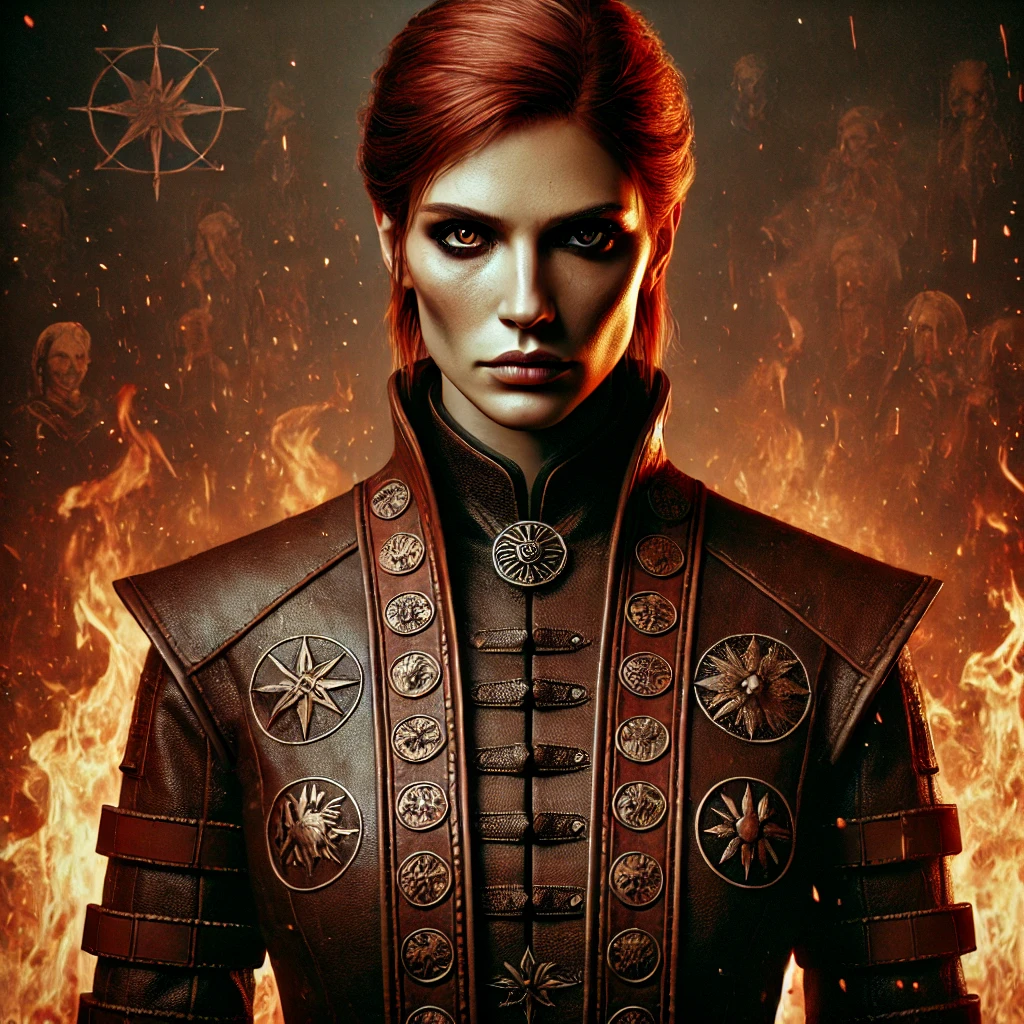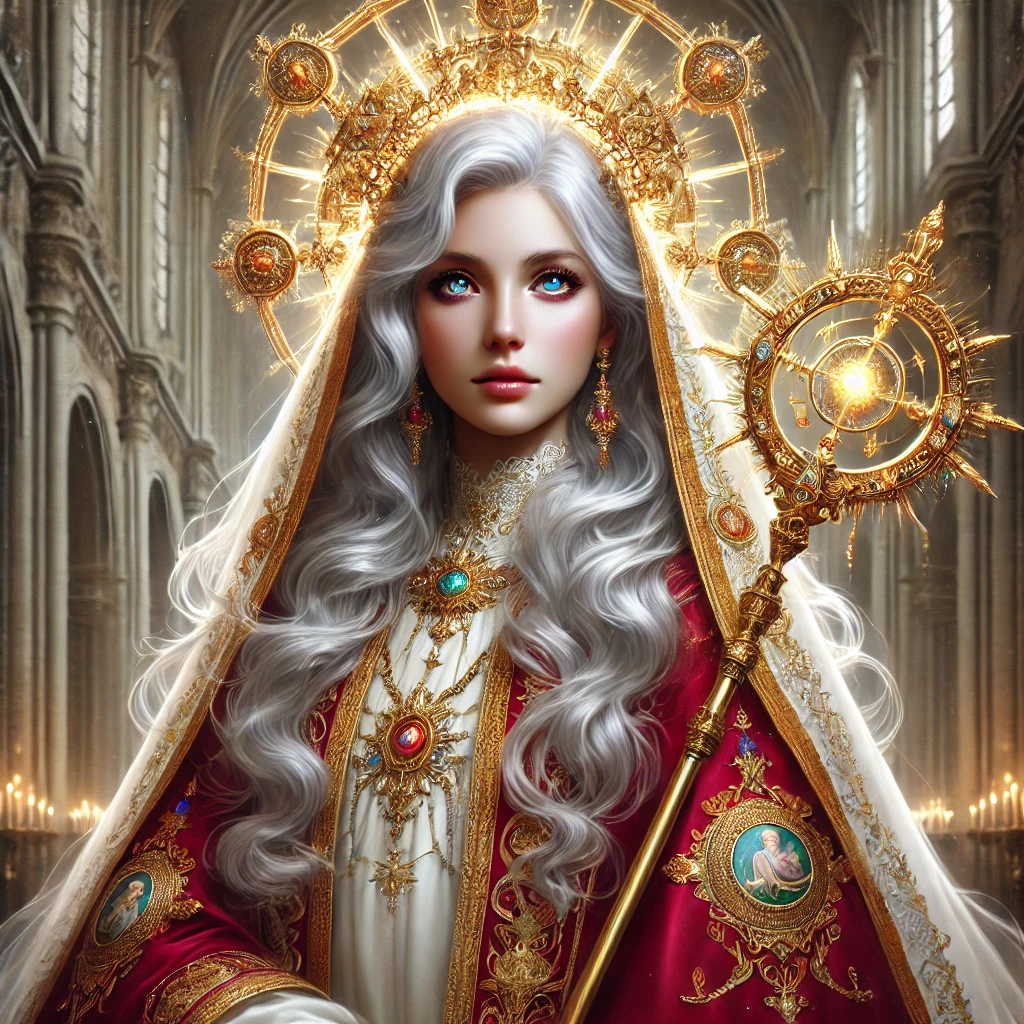The Ecclesiarchy
The Ecclesiarchy of Clairvaux is the state church and spiritual backbone of the Queendom. It is both a religious and political institution, controlling not only the faith of the people but also vast swathes of land, military resources, and legal authority. Unlike the nobility, which is divided among the Duchies, the Ecclesiarchy is centralised, with absolute power vested in the Pontifex, who is considered the Lady’s voice on earth. The current Pontifex, Bronwyn, is an aasimar and one of the youngest to ever hold the title.
Hierarchy of the Ecclesiarchy
The Ecclesiarchy is structured like a rigid, sacred hierarchy, with every level answerable to the one above.- The Pontifex – The supreme leader of the Ecclesiarchy, chosen through divine election by the Ecclesiarchs. She is always an aasimar, believed to be chosen by the Lady herself. The Pontifex serves for life and has the final word on matters of doctrine, faith, and heresy. She is both a spiritual leader and a political force, wielding immense influence across Clairvaux.
- The Ecclesiarchs – There are twelve Ecclesiarchs, each one representing one of the Twelve Saints. All Ecclesiarchs are female aasimars, selected for their wisdom, piety, and mastery of divine magic. They serve as a ruling council, advising the Pontifex and ensuring the faith remains strong across the Queendom.
- The High Abbesses – Beneath the Ecclesiarchs are the High Abbesses, powerful religious figures who control key regions or institutions of the Ecclesiarchy. Each High Abbess governs a luminarium (a holy academy), a grand cathedral, or a key military region of the Order of Sanctarians.
- Priestesses & Clerics – The backbone of the Ecclesiarchy consists of thousands of priestesses and clerics, who serve in temples, conduct rituals, and guide the common folk in their faith. They are responsible for baptisms, marriages, funerals, and other sacred duties.
- Lay Sisters & Initiates – These are the lowest ranks within the Ecclesiarchy. Young girls who show promise in divine magic or scholarship are often taken to the luminaria and trained as initiates. Some later become priestesses or clerics, while others join the Order of Sanctarians.
The Luminaria: Monasteries & Schools of Divine Learning
The Luminaria (sing. Luminarium) are the centres of religious learning, functioning as both monasteries and schools for future clerics, scholars, and paladins of the faith. Each luminarium is dedicated to one of the Twelve Saints, and its teachings are influenced by the saint's virtues. The Purpose of the Luminaria The luminaria exist for three main reasons:- Education of the Faithful – They train young women in the holy scriptures, divine magic, and combat if necessary. Those born with divine gifts are sent here to hone their powers.
- Purification & Indoctrination – Some children taken from noble or wealthy families are sent here for spiritual refinement. This is seen as a great honour, though in some cases, it is done as a political necessity to ensure loyalty.
- Training the Ecclesiarchy’s Agents – Future priestesses, paladins, and clerics are raised in the luminaria from a young age. Many members of the Order of Sanctarians are trained here before taking their final vows.
The Order of Sanctarians
The Order of Sanctarians is the military arm of the Ecclesiarchy, responsible for rooting out heresy, defending temples, and ensuring that faith in the Lady remains absolute. They are the ultimate enforcers of religious law, feared and respected across Clairvaux. Structure of the Order- The Twelve Magistrices – The Order is ruled by twelve Magistrices (sing. Magistrix), each one representing one of the Twelve Saints. These women are warriors, inquisitors, and judges, overseeing trials, interrogations, and purges. They report directly to the Pontifex and wield almost absolute power when acting in her name.
- The Sanctified Paladins – The most elite warriors of the Order, the Sanctified Paladins are clad in blessed armour and wield divine weapons. They are trained to hunt heretics, especially rogue magic users, and are said to be able to sense arcane magic from great distances.
- The Inquisitors – The most feared members of the Order, Inquisitors are specialists in interrogation, subterfuge, and assassination. They are responsible for rooting out heresy in all levels of society and are given authority to arrest, judge, and sentence individuals without trial.
- The Warrior-Sisters – The bulk of the Order is made up of trained warrior-sisters who serve as soldiers of the faith. They guard temples, hunt rogue mages, and accompany Ecclesiarchy officials as bodyguards.
- The Purifiers – These women are tasked with the execution of heretics. They oversee public burnings, ensuring that those condemned as sorcerers or heretics are given no escape. They wear black robes, their faces concealed by veils, and chant prayers as the fires are lit.
- The Sanctarian Trials – Suspected heretics and mages are given a short, brutal trial. If found guilty (as most are), they are executed publicly. Magic users are burned alive, while other heretics are hanged or beheaded.
- The Purges – Large-scale hunts for heresy. During these, entire villages may be investigated, and any sign of magical activity is met with swift and harsh retribution.
- Holy Retribution Missions – The Order occasionally launches military operations against known arcane enclaves, rooting out wizards, necromancers, and warlocks hiding in secret.











Comments